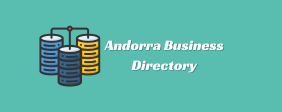As a business owner, you want to make the most of the peak shopping season. If you’re still wondering how to prepare for Black Friday eCommerce sales, worry no more: we’ve prepared 15 Black Friday eCommerce tips that will help you boost your online sales during the biggest shopping season of the year.
Let’s take a look at our step-by-step guide on how to create your Black Friday eCommerce strategy:
1. Plan Ahead
This year, Black Friday weekend begins on pakistan phone number library Friday, November 29 and runs through Cyber Monday, December 2. It may seem like there’s still plenty of time, but with many retailers starting to promote deals earlier and earlier (like early November or even late October!), the discount season is actually upon us. That’s why it’s essential to plan ahead, which means getting started as early as possible.
Start by researching Black Friday best practices that other retailers have implemented in recent years. Analyze and decide which ones work for you, then modify them to fit your business needs. Here are some popular Black Friday campaigns that have gone viral, which can serve as inspiration to get you started.
Now that you have checked out what your main competitors have done, try to make their strategies better, more relevant to your business and more effective.
Brainstorm fresh Black Friday ideas that you can A/B test ahead of time, so when the time comes you can apply your takeaways to your actual campaign.
Create a coordinated content strategy across all your channels, such as your website, social media platforms, and email campaigns. Think about relevant content for each of these channels, as well as timing for launching everything.
2. Make sure your website can handle the increase in traffic
If you’ve completed step #1 correctly, you 5 reasons to focus on content marketing in italy can expect a lot of traffic to your online store on Black Friday. This leads to the next question: is your website ready to handle all that traffic?
Traffic spikes can consume large amounts of bandwidth, potentially exceeding your hosting plan limits or causing network congestion, resulting in slower data transfer speeds. This can lead to slower processing times or even crashes.
As the server struggles to process requests, the time it takes to load pages can increase dramatically.
If the server can’t handle the load, it might start returning errors like 500 Internal Server Error, or requests might time out entirely, causing broken pages and failed transactions.
It goes without saying that if your site slows down or crashes completely due to a traffic spike, you will lose sales.
As an eCommerce owner, you need to make sure that your online store loads as quickly as possible for your visitors and that it is reliable.
Here are some things you can do to optimize the loading speed of your web pages:
- Uses caching technology
Caching is one of the most powerful be numbers tools to speed up your website, especially during traffic spikes. It stores copies of your files and data in the server’s memory, allowing more users to access them faster.
- Enable a content delivery network (CDN)
A CDN is a tool that speeds up your website when you have international traffic from multiple countries and continents. It will cache your site content, distribute it across multiple data centers around the world, and deliver your site content from the server closest to the visitor.
